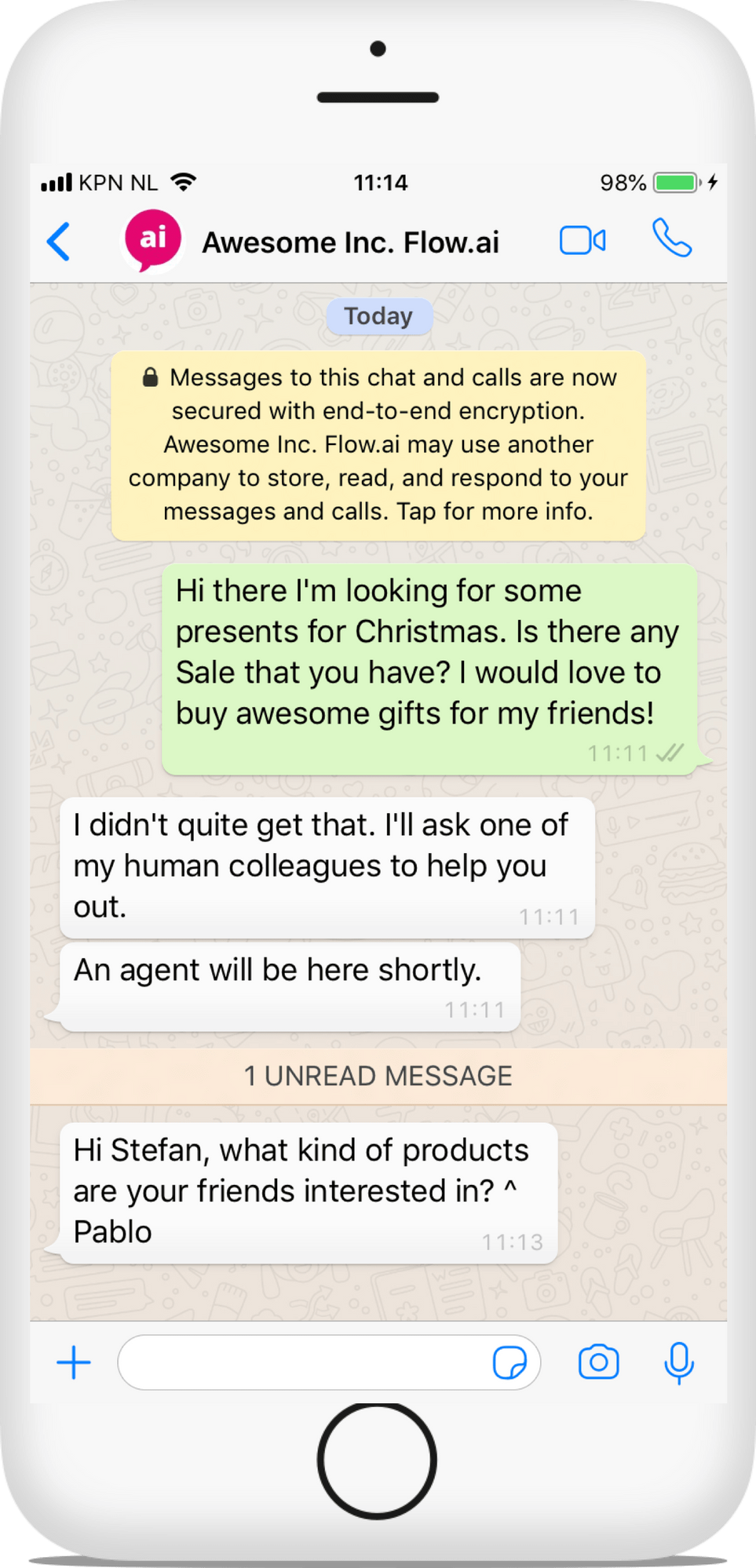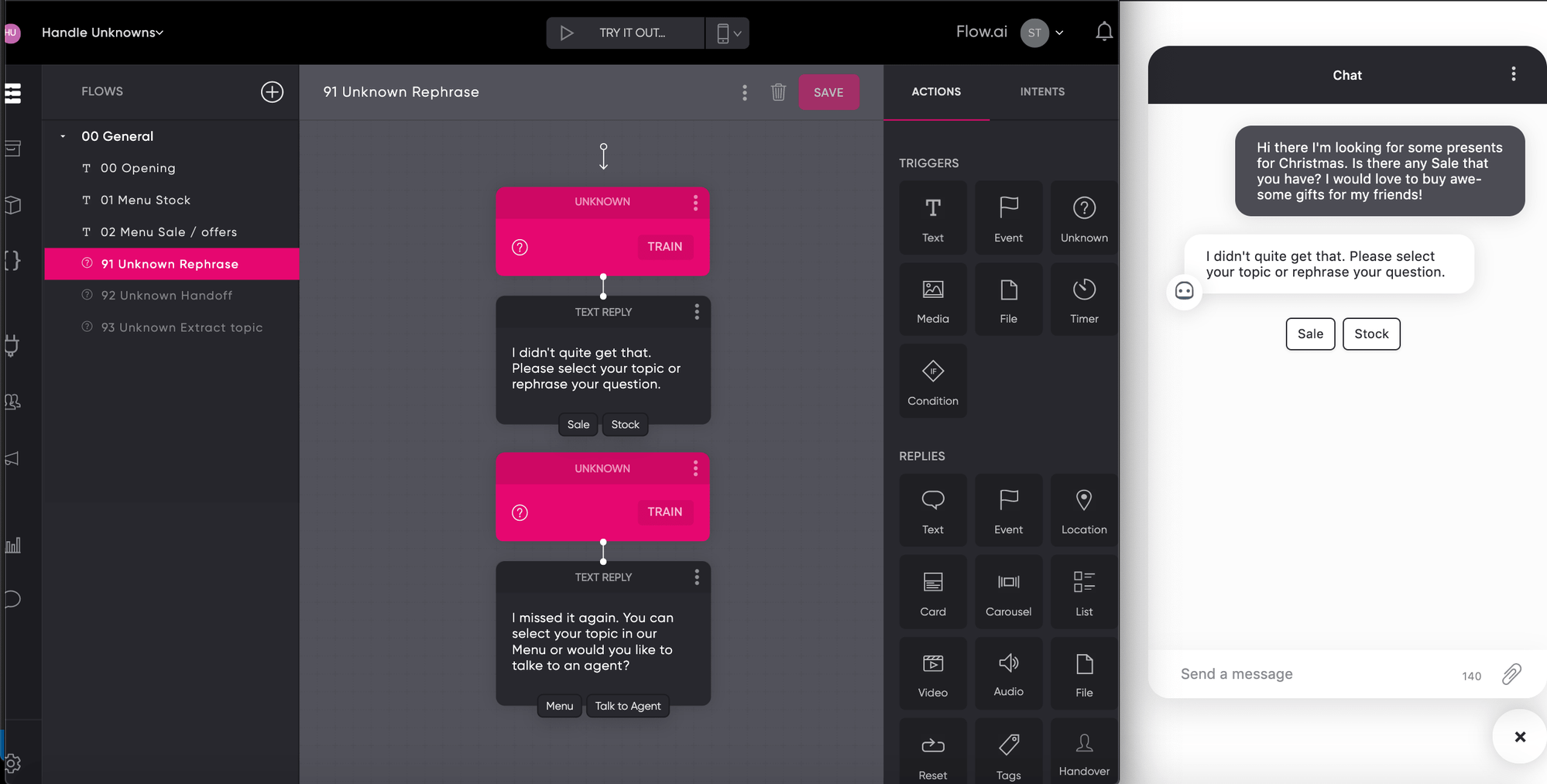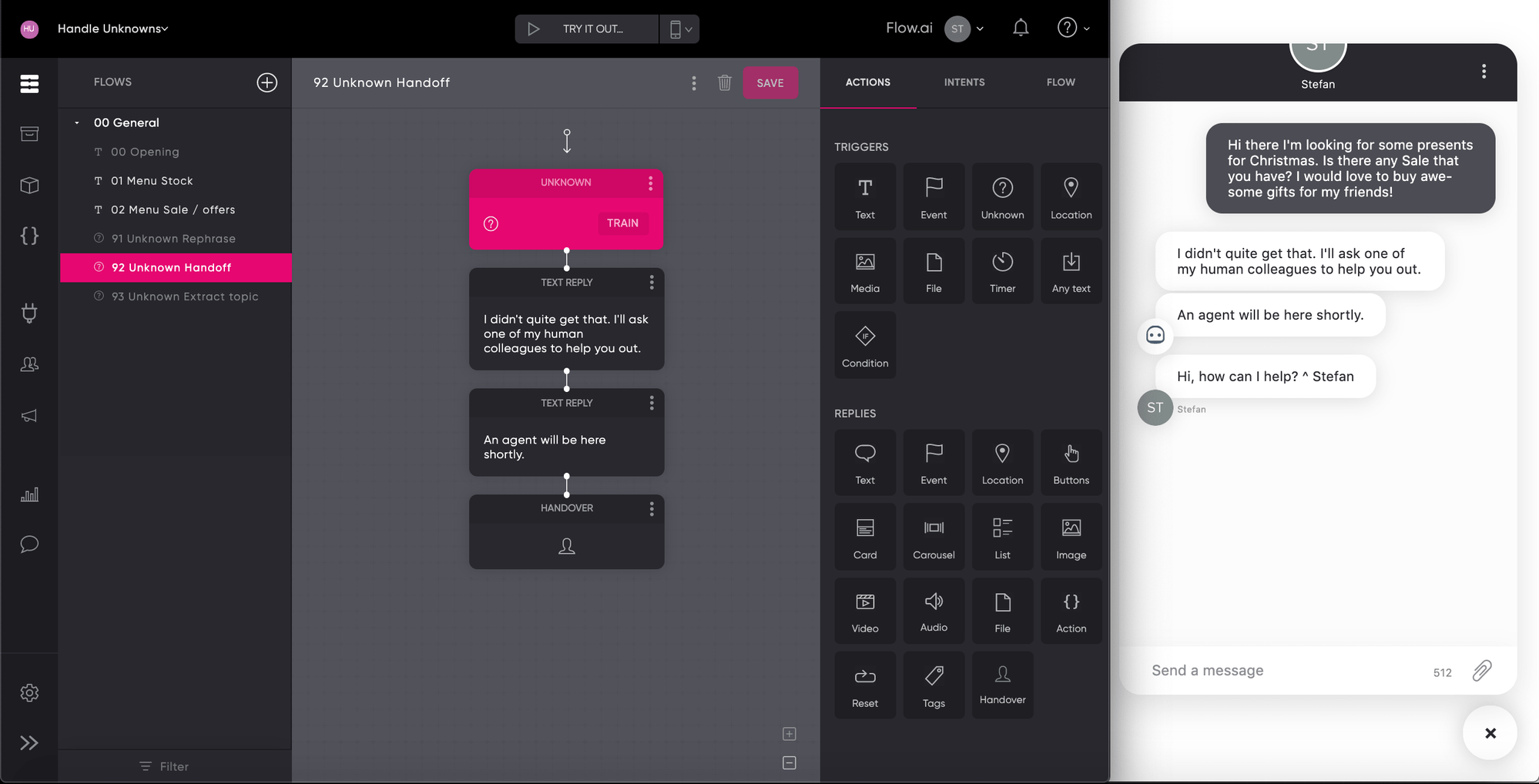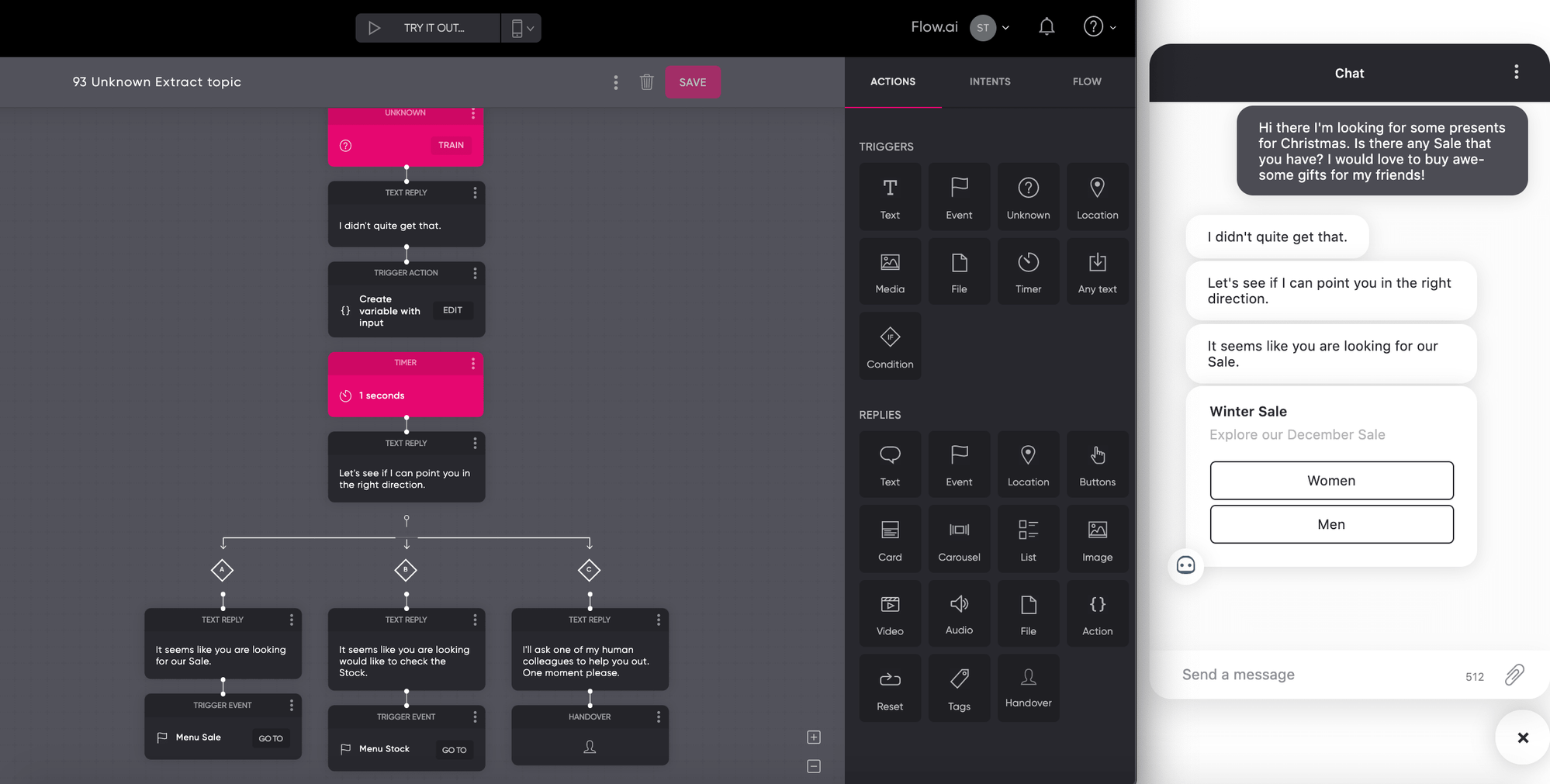Flow Designs: Troubleshoot chatbot failures
Even though you've spent a lot of time designing, testing, and improving your bot, it will fail from time to time. Make sure to prepare your bot with a decent fallback and set up an environment so that you can learn from these failures. This guide shows you:
- Best Practices: handling the unknown
- Ways to handle the Unknown
Best Practices: handling the unknown

When your bot fails, we recommend doing the following:
-
Acknowledge failure
Be honest and acknowledge the “failure”. When your bot has no clear answer to question, you can start with acknowledging the failure with something like “Sorry, I didn’t quite get that”. -
Propose a solution or workaround
Now, we’ve acknowledged the failure but there is no solution at all. So our bot is definitely not helpful. Always try to propose a solution. Common solutions that will be discussed in the next section are:
- Asking to rephrase
- A handoff to an agent
- Extract topics
- Gather and process feedback
Now, we’ve proposed a solution but still, how do we know if that answer is satisfying? Simply ask for it. A question like “Was I able to help”, followed by a thumbs up or thumbs down button can do the job.
This is a great opportunity to learn how you can improve your bot. Read more about it in our article about Measure feedback or performance.
Ways to handle the Unknown
After acknowledging the failure, you can start building an actual solution for our bot to handle the Unknown. You can use one or a combination of the following techniques to handle situations that are not known to your chatbot. It all depends on your case and available resources and agents.
- Rephrase and show topics
A simple solution is to ask the user to rephrase their question. Even though this solution seems simple, it can be very effective. In addition to rephrasing you can also show topics within Quick Reply.

- Handover
A second solution is to hand the conversation over to a human agent. Agents are very good at understanding complicated questions and answering those out of the box. Acknowledging failure is optional in this scenario. It's does not add any value and there will be a person following up anyway.
Two common handoff scenarios to consider are: Live chat and Ticketing software
Following up with livechat or creating tickets in a CRM all depends on your existing process and available resources and tools that you are using like Hubspot, Salesforce or Freshdesk.
Zapier is a great tool that you can use to connect your bot with many other solutions. Read more about how you can improve your chatbot by using Zapier.

- Extract topics
A third solution is trying to extract topics that the bot is trained for. When the bot is not able to recognize a topic we can still hand the conversation off to a human colleague.
To set this one op we'll first need to transfer the input of the user into a parameter. You can do that with an Action with the following code that will create a parameter with the name "query". The value of this param will be equal to the input of the user.
async payload => {
return {
params: {
...payload.params,
query: [{
value: payload.query
}]
}
}
}
With our new param in place we can follow up with Conditions to see if there are topics or words that we recognize. If there are topics that we recognize we can show the user how the bot is able to help him with that topic.

Updated about 2 years ago